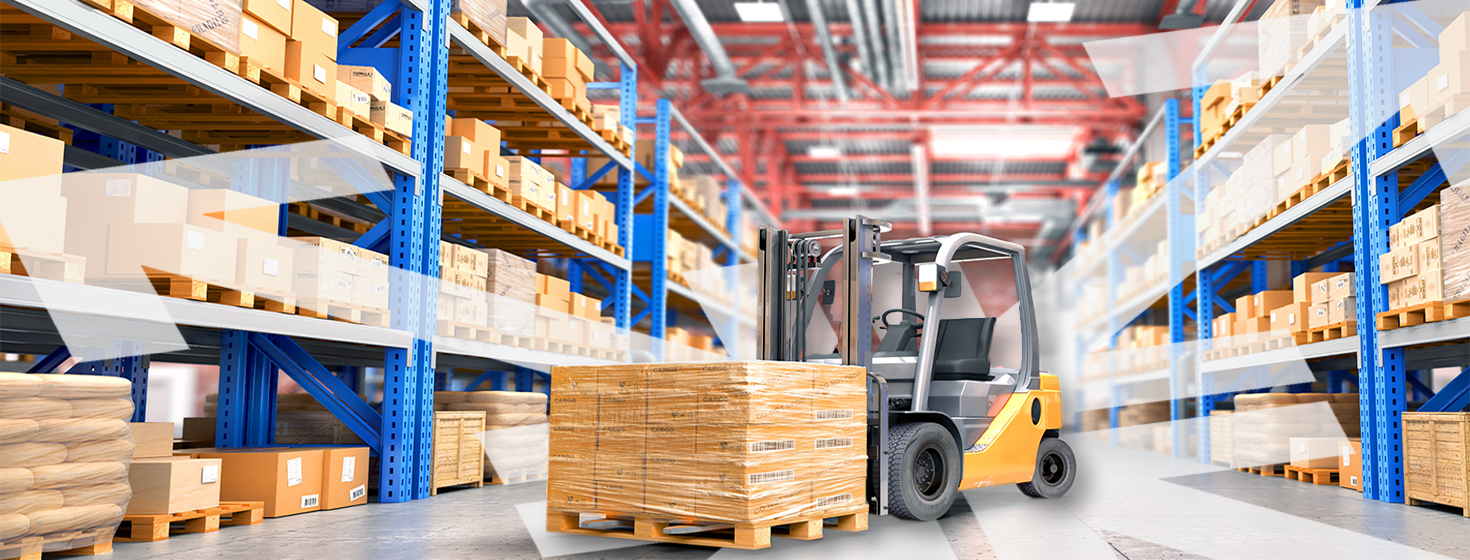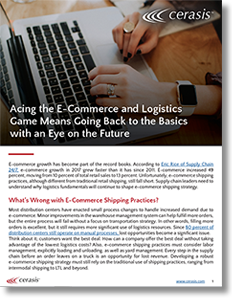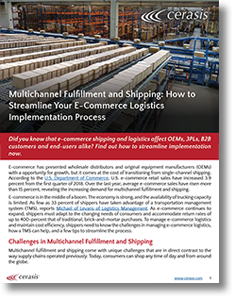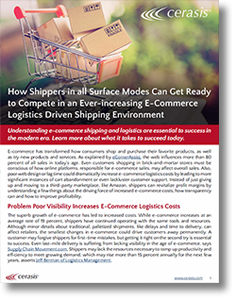Ecommerce Continues Move Toward Heavier Freight Purchases
With the spread of COVID-19, expect a rise in e-commerce orders - the industry is used to small package deliveries, but shippers of heavier freight will also need to master online-enabled processes and transactions as their orders rise in 2020.

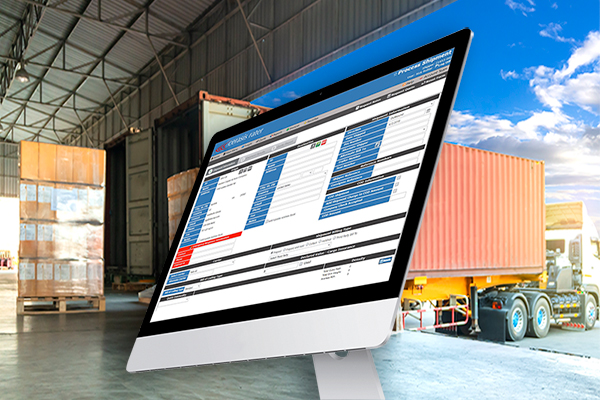
Is This the Year Heavier Freight in Ecommerce Proliferates?
The state of e-commerce continues to move more toward heavier, non-traditional online purchases.
The trend has been evident in recent years, but heavier freight remained on the fringe of e-commerce shipping.
However, the state of the industry is changing in the wake of the coronavirus, or COVID-19, and shippers need to understand why and what it means for heavier freight shipping and how to navigate heavier freight to stay successful in e-commerce freight shipping in 2020.
What’s Happening With Ecommerce Freight Shipping in 2020
The U.S. is in panic, and customers are demanding much more of shippers than ever before.
The need to stock up is paramount, and shippers are struggling to keep up with demand.
As more people look to avoid public places, the need for e-commerce freight shipping in 2020 will only grow, and with the uncertainty surrounding coronavirus, heavier freight will need to become more synonymous with e-commerce capabilities too.
Moreover, today’s consumers want the same delivery standards, fast and free, for heavier e-commerce freight, and consumers are actively avoiding certain retailers that cannot meet such standards. According to Freight Waves:
“Of 330 consumers surveyed who bought an oversized piece of furniture last year, 56 percent said they would avoid a boutique retailer if the shipping costs were too high, while 36 percent said they wouldn’t use such a retailer if the delivery windows were too long, according to a survey released August 29 by logistics technology company uShip and research firm YouGov. About 27 percent abandoned a boutique retailer’s cart because they were turned off by the delivery expense, and 26 percent said replacing their current furniture was either too difficult or costly, the survey found.”
The Benefits of Heavier Freight in-Commerce
Heavier freight in e-commerce offers several benefits to shippers and carriers alike. Carriers can charge more for heavier freight with lower volumes. Shippers can move more freight and effectively increase profitability.
At the same time, heavier e-commerce freight shipping in 2020 will help keep the economy moving as coronavirus pulls the nation and world into an economic slump.
With social distancing the new norm, everything is coming together to finally transform heavier freight into a core component of the global e-commerce shopping and shipping experience.
For carriers struggling to keep up with capacity, heavier freight shipping can also fulfill more trucks, avoiding deadhead and unnecessary losses.
Heavier freight will also become a standard part of shipping in the fight against coronavirus. Ventilators and heavy equipment will help to proliferate heavier shipping going forward, and the trucking industry is already working to help combat the spread of the virus through driver information, preparedness, and route optimization.
Yes, route optimization returns to the conversation as companies look to minimize interaction in coronavirus hot spots, reports Jack Roberts of Trucking Info.
How to Prepare for Heavier, More Diverse Freight in E-Commerce
Preparing for heavier, diverse freight in e-commerce mirrors the steps of improving efficiency in operations to handle small package e-commerce. For instance, take the following steps:
- Collect data on heavier e-commerce freight shipping in 2020.
- Connect with customers to understand buying patterns in e-commerce freight shipping throughout the coronavirus outbreak and beyond.
- Integrate your TMS with all procurement and supply chain management systems now.
- Avoid unnecessary software modifications that will add to disruption risk.
- Do not stop supply chain operations unless ordered to do so or failure would create an undue risk to staff and customers.
- Work with more carriers to avoid potential disruptions.
- Consider the unique needs of customers, ensuring carriers follow CDC guidelines to avoid spending too much time in customer homes; if extra time is needed, ensure drivers wear masks or other personal protective equipment to avoid transmission.
- Take advantage of ongoing route optimization, leveraging real-time data to understand changes in trade lanes and more.
Future-Proof Your Supply Chain With End-to-End E-Commerce Capabilities Now
Heavier freight in e-commerce was on track to finally become a standard in supply chains this year. Then, the coronavirus disrupted the majority, 75%, of the industry. While an argument exists for the inclusion of heavier freight in e-commerce freight shipping in 2020 to combat the spread of the disease, the outbreak will likely lead to a retraction of consumer’s buying habits.
Obviously, necessities will be excluded from lower demand, but the industry is now in the perfect position to make the changes necessary and finally embrace heavier freight in e-commerce going forward. It is time to invest in an advanced TMS, such as the Cerasis Rater, that enables small package through bulky, large deliveries to anywhere and even residences.
Related Article: The State of the Tactical Freight Market and What You Need To Know To Understand It
Related Ecommerce White Papers
Acing the E-Commerce and Logistics Game Means Going Back to the Basics with an Eye on the Future
In this white paper, you will learn what supply chain leaders need to understand why logistics fundamentals will continue to shape the e-commerce shipping strategy and how to master e-commerce logistics. Download Now!
Bringing Omnichannel to the Forefront of Ecommerce
This white paper is a must-read for those who are looking to go omnichannel with their supply chain and want to understand that a major part of that strategy is in the e-commerce channel. Download Now!
Multichannel Fulfillment & Shipping: Streamlining Your Ecommerce Logistics Implementation Process
This white paper is a must-read for those shippers of larger freight and surface freight who are wanting to open channels, such as direct to consumer by using e-commerce, beyond traditional ones. Download Now!
How Shippers Can Compete in an Ecommerce Logistics Driven Shipping Environment
Understanding e-commerce shipping and logistics are essential to success in the modern era, this white paper details what it takes for shippers in all surface modes to compete and succeed in today's ecommerce logistics driven shipping environment. Download Now!
More Resources from Cerasis

Article Topics
Latest in Materials Handling
U.S-bound May imports continue to grow, reports S&P Global Market Intelligence AGILOX North America opens new headquarters, announces new CEO Auriemma becomes new CEO of Business Unit Software at Körber Expo Pack México 2024 sets new records Hai Robotics announces move of its Americas headquarters to Atlanta metro Glencore improves recycling plant safety with ELOKON’s proximity detection system National Forklift Safety Day: Yale Reliant operator assistance technology reaches 14 million hours of real-world run time More Materials HandlingSubscribe to Materials Handling Magazine

Find out what the world's most innovative companies are doing to improve productivity in their plants and distribution centers.
Start your FREE subscription today.
June 2024 Modern Materials Handling

Latest Resources


